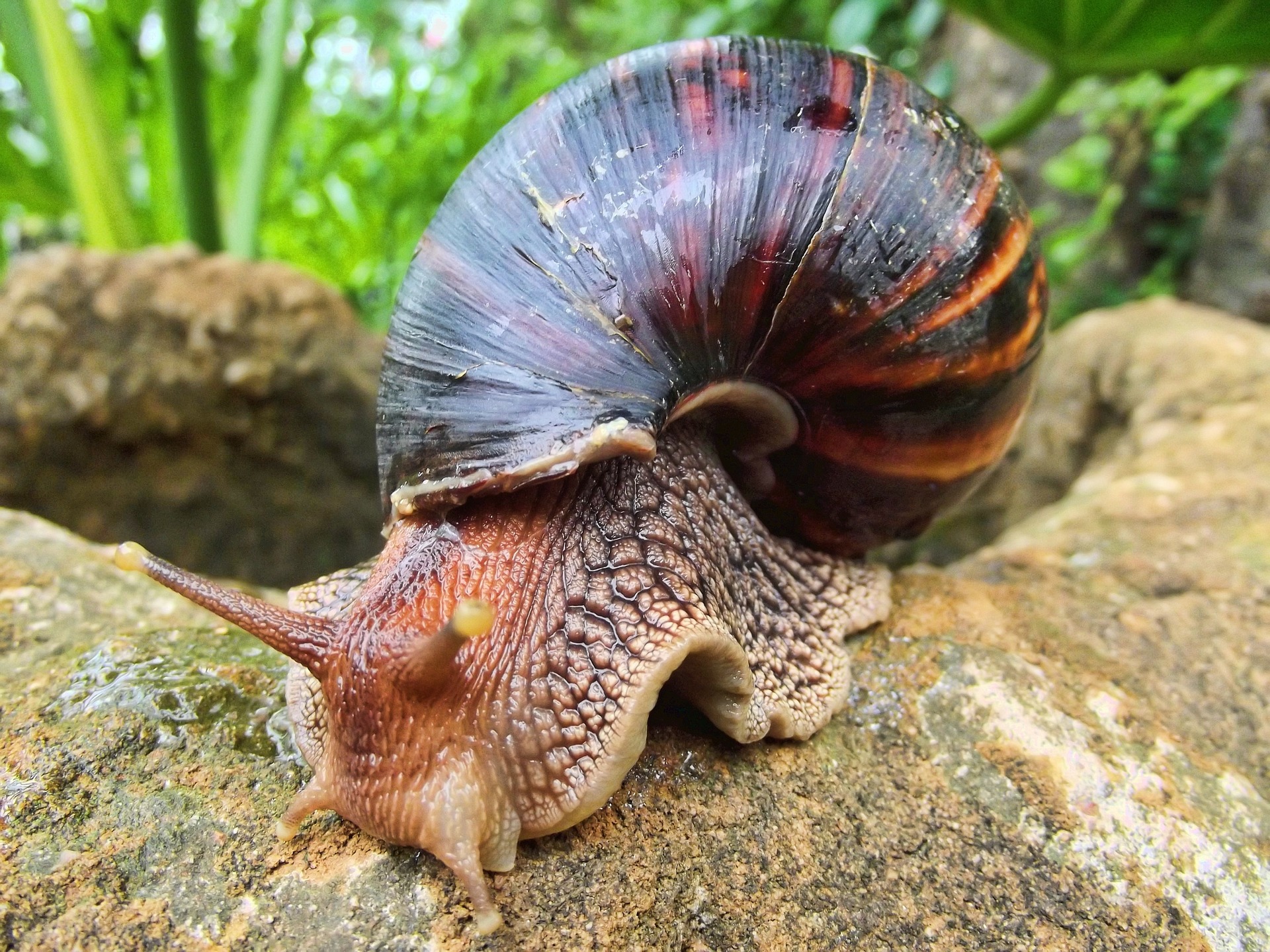
Authorities in Cuba are battling an invasion by giant African snails, which are feared to be capable of destroying crops and transmitting diseases.
The giant African snails infesting neighborhoods in Cuba, particularly in Havana, are characterized by shiny, brilliantly striped shells and bodies up to 8 inches in length. A nationwide civil defense system has been activated by Cuban authorities to address the snail problem but some people claim that it is inadequate.
Yusmila Marín, a 29-year-old nurse who lives in a neighborhood infested by the snails, said: "I never heard of them before, but now they're everywhere." Marín and families in the Villa Panamericana neighborhood are not letting the children play outside due to the danger of infection from the snails, whose scientific name is Achatina fulica.
These snails are said to be capable of transmitting a potentially severe brain infection called meningoencephalitis and an abdominal disease known as angiostrongiliasis. They were first discovered in the country in 2014 but they can now be seen throughout Havana and in almost every one of the island's provinces.
How the snails entered the country is still unknown.
Cuba's health authorities have called on the people to collect snails without touching them with their bare hands and to destroy them in sealed containers. They say it will take some time to keep the infestation under control.
Since the snails do not have any natural predators in the country and feed on fruits, vegetables and even garbage, they were able to rapidly increase in numbers. Isbel Díaz, a biologist who runs a non-governmental environmental group in Havana, pointed out: "It's a health problem, an economic problem and an ecological problem. It's a real challenge. No country has been able to control this plague and Cuba won't be able to in the short or mid-term."






